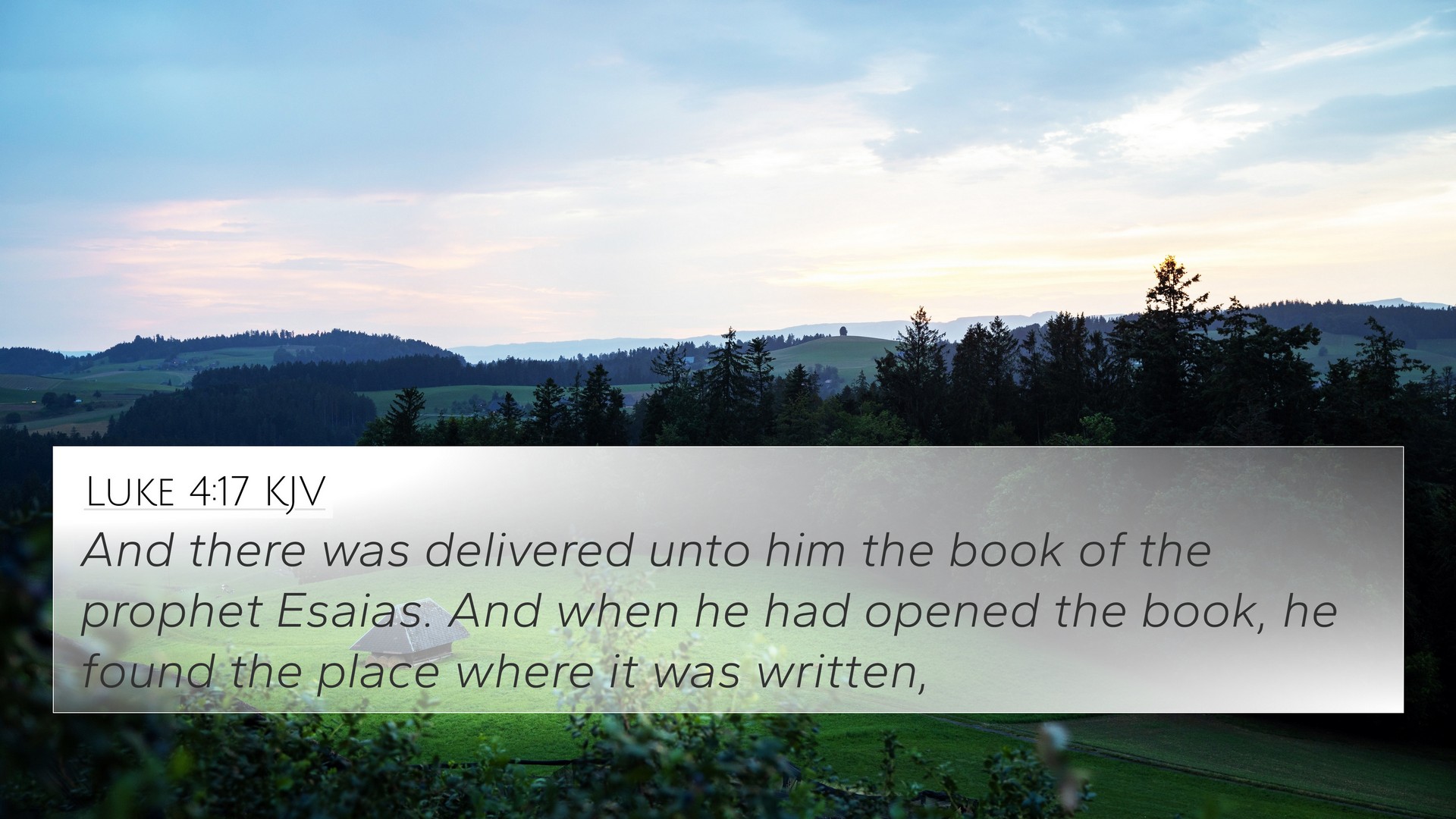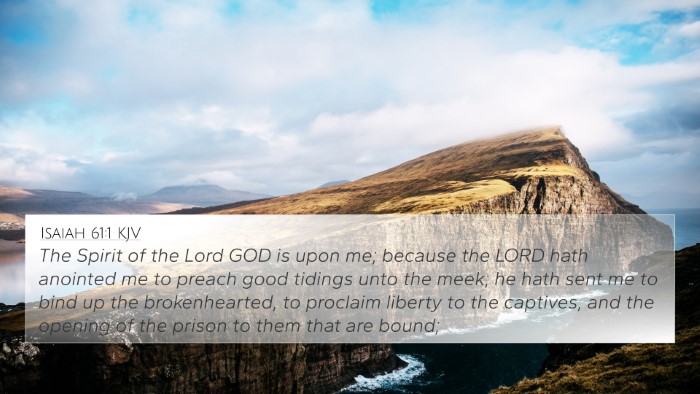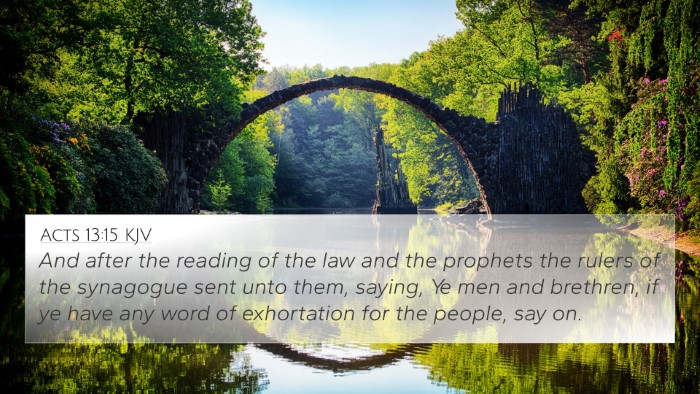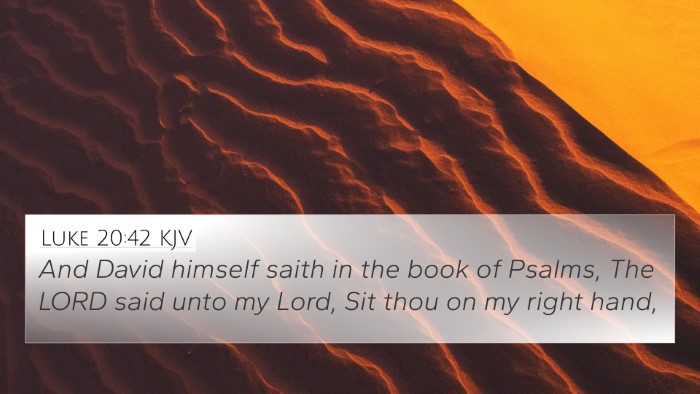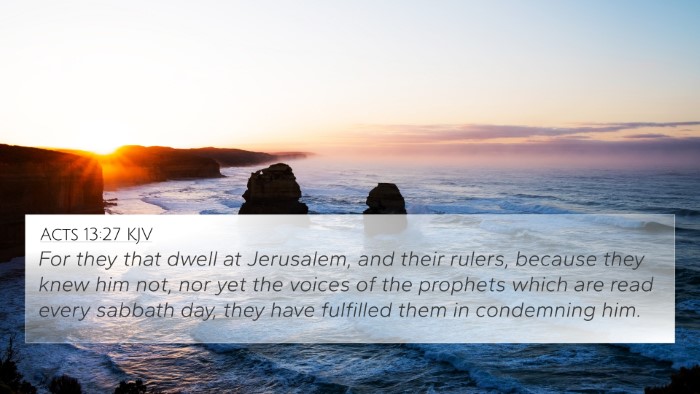Understanding Luke 4:17
Luke 4:17 states: "And there was delivered unto him the book of the prophet Esaias. And when he had opened the book, he found the place where it was written." This verse marks a significant moment in Jesus' ministry as He reads from the scroll of Isaiah in the synagogue of Nazareth, signifying not only the fulfillment of prophecy but also His mission on Earth.
Summary of Luke 4:17 Meaning
The act of reading from the scroll highlights several key elements in understanding the fullness of this verse:
- Fulfillment of Prophecy: Jesus' reading from Isaiah underscores His role as the Messiah, fulfilling Old Testament prophecies.
- Public Declaration: Jesus openly reveals His mission which is to preach good news to the poor, heal the brokenhearted, and bring liberty to the captives.
- Connection with Scripture: Jesus demonstrates the importance of Scripture in revealing God's plan for redemption.
- Awareness and Acceptance: This moment invites the listeners to recognize and accept the profound implications of His reading.
Commentary Insights
Combining insights from public domain commentaries provides a deeper understanding of Luke 4:17.
Matthew Henry Commentary
Matthew Henry emphasizes that Jesus’ choice of verses to read showcases His intention to announce His mission clearly. It signifies His compassion for the marginalized and needful. His reading isn’t merely reciting Scripture but is a declaration of His purpose to fulfill the prophetic words given through the prophet Isaiah.
Albert Barnes Commentary
Barnes points out the significance of the scroll of Isaiah, or Esaias, and its role in the Jewish setting. By reading from Isaiah, Jesus connects deeply with Jewish tradition and scripture while also redirecting their understanding of what being the Messiah entails. His focus on liberation and healing reiterates his purpose to redeem humankind.
Adam Clarke Commentary
Adam Clarke sheds light on how this passage sets the stage for Jesus’ public ministry. He views it as a proclamation of the gospel, underscoring the compassionate nature of Jesus’ mission. Clarke suggests that this act serves not only as an introduction to His ministry but serves as an invitation for all to come and receive from Him.
Cross-References and Related Verses
Luke 4:17 is interconnected with several Bible verses that echo similar themes of prophecy, mission, and Jesus' ministry. Here are some notable cross-references:
- Isaiah 61:1-2: The foundational text Jesus reads from, detailing the mission of the Messiah.
- Luke 4:18: Directly following verse 17, further elaborates on the mission defined by Jesus.
- Matthew 5:3-12: The Beatitudes relate to Jesus’ concern for the poor and marginalized.
- John 3:17: Highlights that Jesus came to save, not to condemn, emphasizing His redemptive nature.
- Matthew 11:4-5: Jesus’ answer regarding His mission and miracles aligns with the themes presented in Luke 4:17.
- Isaiah 53:4: Touches on the suffering servant, connecting with the theme of healing and liberation.
- Galatians 5:1: Speaks of freedom in Christ, resonating with the theme of liberation in Luke 4:17.
- Acts 10:38: Describes Jesus’ ministry of healing and doing good, relevant to the message of Isaiah.
- 1 Peter 2:24: Advocates for healing through Christ, reflecting the mission Jesus describes.
- Luke 19:10: States Jesus came to seek and save the lost, reiterating His overarching mission.
Thematic Connections
The themes of liberation, healing, and proclamation present in Luke 4:17 resonate throughout both the Old and New Testaments. Understanding these connections enhances our overall comprehension of Jesus’ role and mission as depicted in the Scriptures.
Conclusion
In Luke 4:17, we see not just a moment of reading in a synagogue, but a pivotal point in the revelation of Jesus’ ministry. By considering insights from Matthew Henry, Albert Barnes, and Adam Clarke, alongside relevant cross-references and thematic connections, readers can gain a more profound understanding of this verse's meaning and its place within the larger narrative of the Bible.
